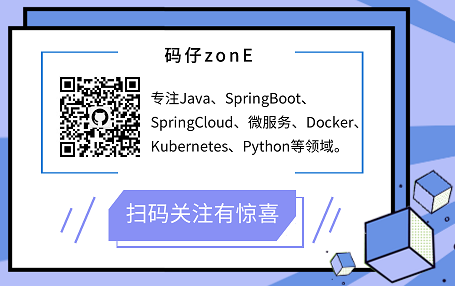语法糖
语法糖(Syntactic Sugar),也称糖衣语法,是由英国计算机学家 Peter.J.Landin 发明的一个术语,指在计算机语言中添加的某种语法,这种语法对语言的功能并没有影响,但是更方便程序员使用。简而言之,语法糖让程序更加简洁,有更高的可读性。
我们所熟知的编程语言中几乎都有语法糖。作者认为,语法糖的多少是评判一个语言够不够牛逼的标准之一。很多人说Java是一个“低糖语言”,其实从Java 7开始Java语言层面上一直在添加各种糖,主要是在“Project Coin”项目下研发。尽管现在Java有人还是认为现在的Java是低糖,未来还会持续向着“高糖”的方向发展。
解语法糖
前面提到过,语法糖的存在主要是方便开发人员使用。但其实,Java虚拟机并不支持这些语法糖。这些语法糖在编译阶段就会被还原成简单的基础语法结构,这个过程就是解语法糖。
说到编译,大家肯定都知道,Java语言中,javac命令可以将后缀名为.java的源文件编译为后缀名为.class的可以运行于Java虚拟机的字节码。如果你去看com.sun.tools.javac.main.JavaCompiler的源码,你会发现在compile()中有一个步骤就是调用desugar(),这个方法就是负责解语法糖的实现的。
Java 中最常用的语法糖主要有泛型、变长参数、条件编译、自动拆装箱、内部类等。本文主要来分析下这些语法糖背后的原理。一步一步剥去糖衣,看看其本质。
语法糖之-switch 支持 String 与枚举
前面提到过,从Java 7 开始,Java语言中的语法糖在逐渐丰富,其中一个比较重要的就是Java 7中switch开始支持String。
在开始coding之前先科普下,Java中的swith自身原本就支持基本类型。比如int、char等。对于int类型,直接进行数值的比较。对于char类型则是比较其ascii码。所以,对于编译器来说,switch中其实只能使用整型,任何类型的比较都要转换成整型。比如byte。short,char(ackii码是整型)以及int。
那么接下来看下switch对String得支持,有以下代码:
public class switchDemoString {
public static void main(String[] args) {
String str = "world";
switch (str) {
case "hello":
System.out.println("hello");
break;
case "world":
System.out.println("world");
break;
default:
break;
}
}
}
反编译后内容如下:
public class switchDemoString
{
public switchDemoString()
{
}
public static void main(String args[])
{
String str = "world";
String s;
switch((s = str).hashCode())
{
default:
break;
case 99162322:
if(s.equals("hello"))
System.out.println("hello");
break;
case 113318802:
if(s.equals("world"))
System.out.println("world");
break;
}
}
}
看到这个代码,你知道原来字符串的switch是通过equals()和hashCode()方法来实现的。还好hashCode()方法返回的是int,而不是long。
仔细看下可以发现,进行switch的实际是哈希值,然后通过使用equals方法比较进行安全检查,这个检查是必要的,因为哈希可能会发生碰撞。因此它的性能是不如使用枚举进行switch或者使用纯整数常量,但这也不是很差。
语法糖之-自动装箱与拆箱
自动装箱就是Java自动将原始类型值转换成对应的对象,比如将int的变量转换成Integer对象,这个过程叫做装箱,反之将Integer对象转换成int类型值,这个过程叫做拆箱。因为这里的装箱和拆箱是自动进行的非人为转换,所以就称作为自动装箱和拆箱。原始类型byte, short, char, int, long, float, double 和 boolean 对应的封装类为Byte, Short, Character, Integer, Long, Float, Double, Boolean。
先来看个自动装箱的代码:
public static void main(String[] args) {
int i = 10;
Integer n = i;
}
反编译后代码如下:
public static void main(String args[])
{
int i = 10;
Integer n = Integer.valueOf(i);
}
再来看个自动拆箱的代码:
public static void main(String[] args) {
Integer i = 10;
int n = i;
}
反编译后代码如下:
public static void main(String args[])
{
Integer i = Integer.valueOf(10);
int n = i.intValue();
}
从反编译得到内容可以看出,在装箱的时候自动调用的是Integer的valueOf(int)方法。而在拆箱的时候自动调用的是Integer的intValue方法。
所以,装箱过程是通过调用包装器的valueOf方法实现的,而拆箱过程是通过调用包装器的 xxxValue方法实现的。
注意
对象相等比较使用自动装箱可能造成的问题
public class BoxingTest {
public static void main(String[] args) {
Integer a = 1000;
Integer b = 1000;
Integer c = 100;
Integer d = 100;
System.out.println("a == b is " + (a == b));
System.out.println(("c == d is " + (c == d)));
}
输出结果
a == b is false
c == d is true
在Java 5中,在Integer的操作上引入了一个新功能来节省内存和提高性能。整型对象通过使用相同的对象引用实现了缓存和重用。
适用于整数值区间-128 至 +127。
只适用于自动装箱。使用构造函数创建对象不适用。
语法糖之-方法变长参数
可变参数(variable arguments)是在Java 1.5中引入的一个特性。它允许一个方法把任意数量的值作为参数。
看下以下可变参数代码,其中print方法接收可变参数:
public static void main(String[] args)
{
print("hello", "world", "123", "456");
}
public static void print(String... strs)
{
for (int i = 0; i < strs.length; i++)
{
System.out.println(strs[i]);
}
}
反编译后代码:
public static void main(String args[])
{
print(new String[] {
"hello", "world", "123", "456"
});
}
public static transient void print(String strs[])
{
for(int i = 0; i < strs.length; i++)
System.out.println(strs[i]);
}
从反编译后代码可以看出,可变参数在被使用的时候,他首先会创建一个数组,数组的长度就是调用该方法是传递的实参的个数,然后再把参数值全部放到这个数组当中,然后再把这个数组作为参数传递到被调用的方法中。
语法糖之-数值字面量
在java 7中,数值字面量,不管是整数还是浮点数,都允许在数字之间插入任意多个下划线。这些下划线不会对字面量的数值产生影响,目的就是方便阅读。
比如:
public class Test {
public static void main(String... args) {
int i = 10_000;
System.out.println(i);
}
}
反编译后:
public class Test
{
public static void main(String[] args)
{
int i = 10000;
System.out.println(i);
}
}
反编译后就是把_删除了。也就是说 编译器并不认识在数字字面量中的_,需要在编译阶段把他去掉。
语法糖之-for-each
增强for循环(for-each)相信大家都不陌生,日常开发经常会用到的,他会比for循环要少写很多代码,那么这个语法糖背后是如何实现的呢?
public static void main(String... args) {
String[] strs = {"hello", "world", "123", "456"};
for (String s : strs) {
System.out.println(s);
}
List<String> strList = ImmutableList.of("hello", "world", "123", "456");
for (String s : strList) {
System.out.println(s);
}
}
反编译后代码如下:
public static transient void main(String args[])
{
String strs[] = {
"hello", "world", "123", "456"
};
String args1[] = strs;
int i = args1.length;
for(int j = 0; j < i; j++)
{
String s = args1[j];
System.out.println(s);
}
List strList = ImmutableList.of("hello", "world", "123", "456");
String s;
for(Iterator iterator = strList.iterator(); iterator.hasNext(); System.out.println(s))
s = (String)iterator.next();
}
代码很简单,for-each的实现原理其实就是使用了普通的for循环和迭代器。
注意
使用增强fou可能遇到ConcurrentModificationException异常
for (Student stu : students) {
if (stu.getId() == 2)
students.remove(stu);
}
会抛出ConcurrentModificationException异常。
Iterator是工作在一个独立的线程中,并且拥有一个 mutex 锁。 Iterator被创建之后会建立一个指向原来对象的单链索引表,当原来的对象数量发生变化时,这个索引表的内容不会同步改变,所以当索引指针往后移动的时候就找不到要迭代的对象,所以按照 fail-fast 原则 Iterator 会马上抛出java.util.ConcurrentModificationException异常。
所以 Iterator 在工作的时候是不允许被迭代的对象被改变的。但你可以使用 Iterator 本身的方法remove()来删除对象,Iterator.remove() 方法会在删除当前迭代对象的同时维护索引的一致性。
语法糖之-try-with-resource
Java里,对于文件操作IO流、数据库连接等开销非常昂贵的资源,用完之后必须及时通过close方法将其关闭,否则资源会一直处于打开状态,可能会导致内存泄露等问题。
关闭资源的常用方式就是在finally块里是释放,即调用close方法。比如,我们经常会写这样的代码:
public static void main(String[] args) {
BufferedReader br = null;
try {
String line;
br = new BufferedReader(new FileReader("d:\test.xml"));
while ((line = br.readLine()) != null) {
System.out.println(line);
}
} catch (IOException e) {
// handle exception
} finally {
try {
if (br != null) {
br.close();
}
} catch (IOException ex) {
// handle exception
}
}
}
从Java 7开始,jdk提供了一种更好的方式关闭资源,使用try-with-resources语句,改写一下上面的代码,效果如下:
public static void main(String... args) {
try (BufferedReader br = new BufferedReader(new FileReader("d:\ test.xml"))) {
String line;
while ((line = br.readLine()) != null) {
System.out.println(line);
}
} catch (IOException e) {
// handle exception
}
}
看,这简直是一大福音啊,虽然我之前一般使用IOUtils去关闭流,并不会使用在finally中写很多代码的方式,但是这种新的语法糖看上去好像优雅很多呢。看下他的背后:
public static transient void main(String args[])
{
BufferedReader br;
Throwable throwable;
br = new BufferedReader(new FileReader("d:\ test.xml"));
throwable = null;
String line;
try
{
while((line = br.readLine()) != null)
System.out.println(line);
}
catch(Throwable throwable2)
{
throwable = throwable2;
throw throwable2;
}
if(br != null)
if(throwable != null)
try
{
br.close();
}
catch(Throwable throwable1)
{
throwable.addSuppressed(throwable1);
}
else
br.close();
break MISSING_BLOCK_LABEL_113;
Exception exception;
exception;
if(br != null)
if(throwable != null)
try
{
br.close();
}
catch(Throwable throwable3)
{
throwable.addSuppressed(throwable3);
}
else
br.close();
throw exception;
IOException ioexception;
ioexception;
}
}
其实背后的原理也很简单,那些我们没有做的关闭资源的操作,编译器都帮我们做了。所以,再次印证了,语法糖的作用就是方便程序员的使用,但最终还是要转成编译器认识的语言。
总结
所谓语法糖就是提供给开发人员便于开发的一种语法而已。但是这种语法只有开发人员认识。要想被执行,需要进行解糖,即转成JVM认识的语法。当我们把语法糖解糖之后,你就会发现其实我们日常使用的这些方便的语法,其实都是一些其他更简单的语法构成的。
结语
欢迎关注微信公众号『码仔zonE』,专注于分享Java、云计算相关内容,包括SpringBoot、SpringCloud、微服务、Docker、Kubernetes、Python等领域相关技术干货,期待与您相遇!
